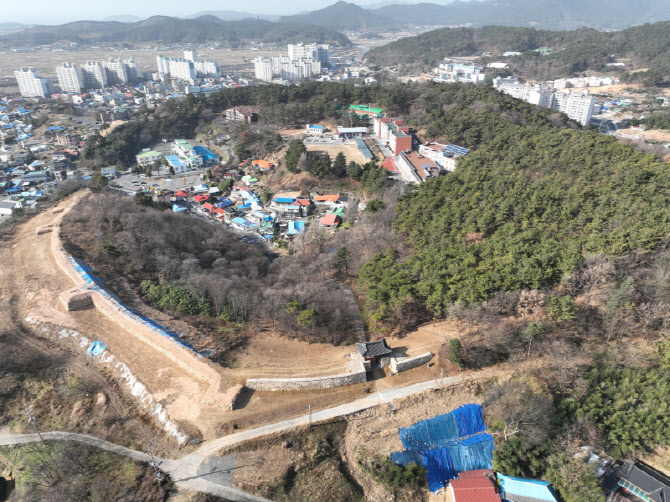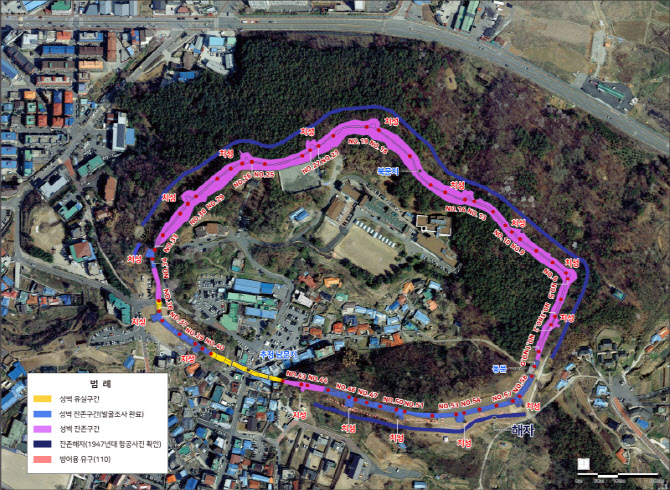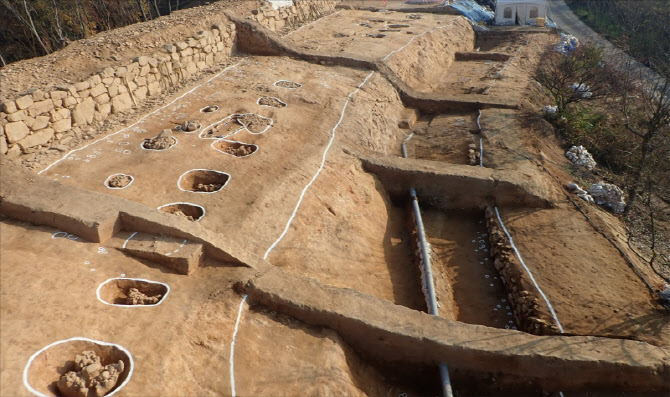A fortress built during the reign of King Sejong for defense against Japanese pirates
Reflects the evolution of construction techniques, significant historical value, ‘[Reporter Jang Byung-ho of E-Daily] The National Heritage Administration announced on the 11th that it has designated ‘Seocheon Eupseong’ in Seocheon-gun, Chungcheongnam-do as a national designated cultural heritage site,’
,
,
|
|
| An aerial photo of ‘Seocheon Eupseong’. (Photo = National Heritage Administration) |
|
, ‘‘Seocheon Eupseong’ is a coastal fortress built in the early Joseon period during the reign of King Sejong (around 1438-1450) to defend against Japanese invaders entering the Chungcheong interior via the Geumgang River estuary. It spans 1645m and was constructed under the national initiative as a coastal stronghold to promote the stability of local administration while defending against Japanese invasions.’,
,
, ‘Uncommonly for a coastal fortress, it was built utilizing hilly terrain. Despite the destruction of many fortresses across the country due to the Joseon fortress demolition order during the Japanese colonial period (1910), most of the Seocheon Eupseong’s walls except for areas around the South Gate have remained intact. Out of the total circumference of 1645m, 1535.5m, or 93.3%, still exists today.’,
,
, ‘Within ‘Seocheon Eupseong’, both the ‘stepped inner wall’ as ordered by the ‘Fortification New Code’ issued in 1438 (20th year of King Sejong) and the ‘vertical inner wall’, a building technique of Hanyang Fortress suggested by Lee Bo-heum in 1443 (25th year of King Sejong) to resolve issues identified after the fortification code’s implementation, are concurrently observed. This provides significant historical value by allowing for an understanding of early Joseon fortification policy evolution.’,
,
,
|
|
| Remnants status of the ‘Seocheon Eupseong’ walls and bastions. (Photo = National Heritage Administration) |
|
, ‘According to literature, it is estimated that there were 17 bastions (protruding structures on fortress walls built to defend effectively against enemies approaching the wall) on Seocheon Eupseong, of which 16 have been investigated to date. These were generally installed at intervals of 90m, a tighter spacing than the installation standard of 150 paces (approximately 155m) from 1433 (15th year of King Sejong), presenting a unique style not found in other fortresses.’,
,
, ‘Additionally, archaeological remains of a moat dug around the fortress for defense against invaders and pit-shaped features on the land have been identified. These pit features are presumed to have been created after the fortress was constructed.’,
,
, ‘A representative from the National Heritage Administration explained, “Seocheon Eupseong clearly demonstrates the structural and transformational processes of early Joseon period coastal fortresses, retaining numerous remains and showcasing its high historical and academic value as a national heritage.”’,
,
,
|
|
| Archaeological remains of pits and a moat at ‘Seocheon Eupseong’. (Photo = National Heritage Administration) |
|
, ‘The National Heritage Administration plans to actively cooperate with Seocheon-gun to promote the value of ‘Seocheon Eupseong’ as a regional representative national heritage, and to develop systematic preservation and maintenance initiatives focused on resident-led preservation, management, and utilization projects.’,
,
,
Visited 1 times, 1 visit(s) today




